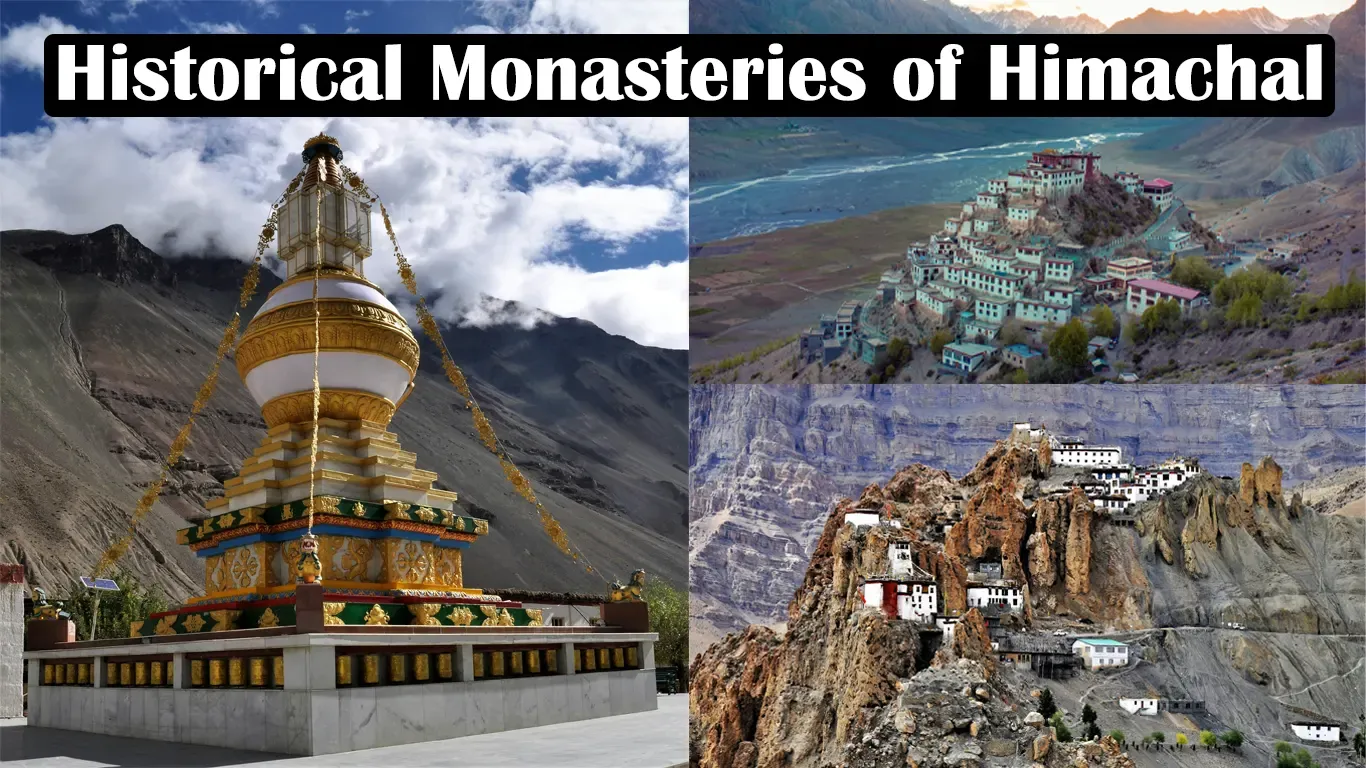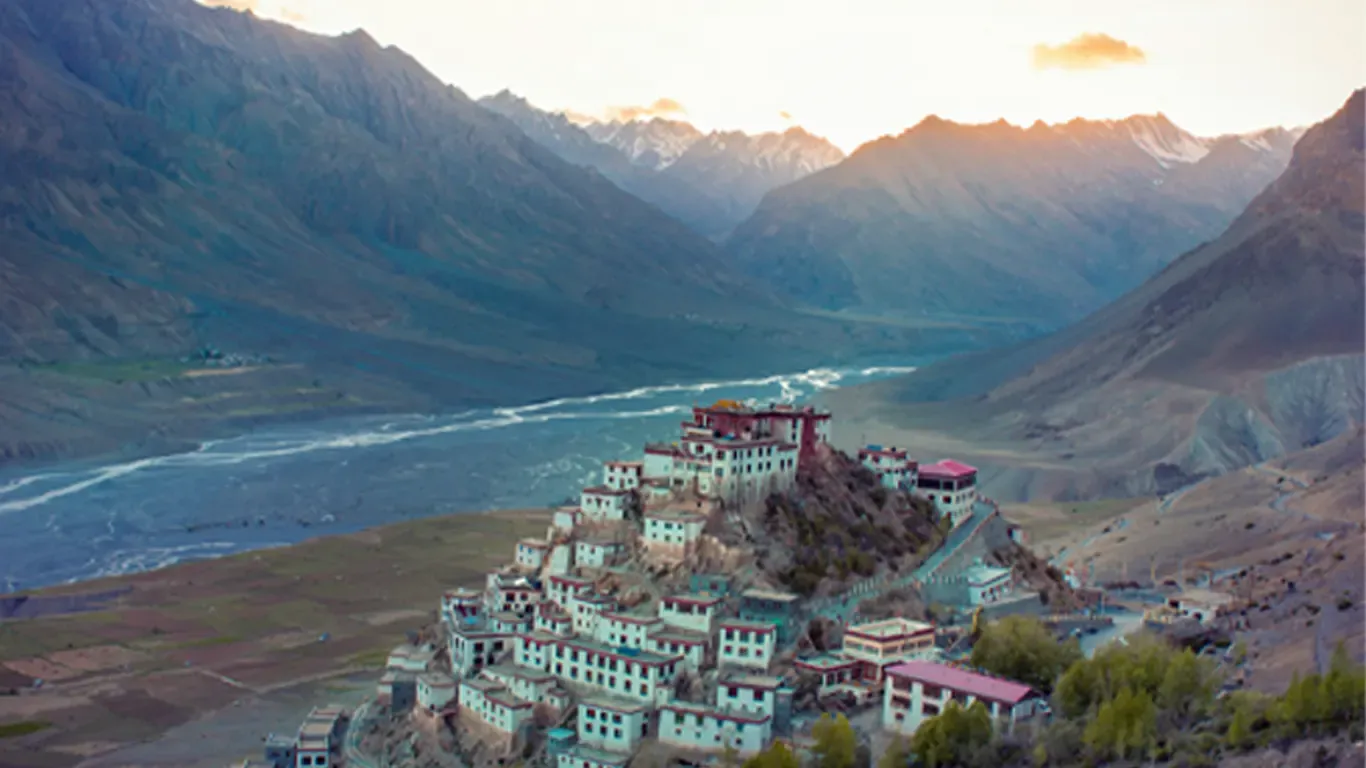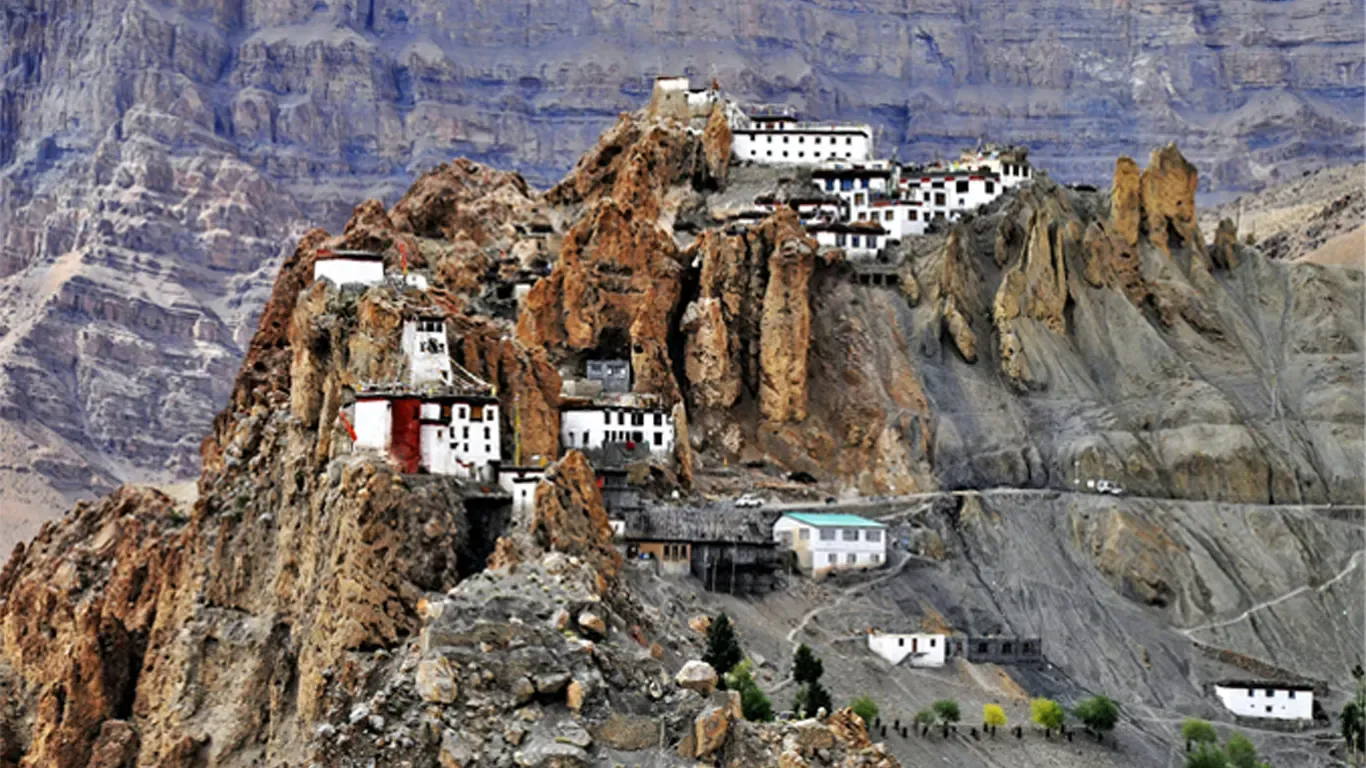Himachal
Pradesh, a state in northern India, is known for its scenic landscapes and rich
cultural heritage. The region is home to several ancient and historic
monasteries that have played a significant role in the religious and cultural
history of the area. Ancient monasteries in Himachal Pradesh stand as
magnificent testimonies to the rich cultural and spiritual heritage of this
Indian state. Nestled amidst the breathtaking landscapes of the Himalayas,
these monasteries have withstood the test of time, preserving centuries-old
traditions and captivating legends.
From the legendary Tabo Monastery to the hidden gem of Dhankar Monastery, each holds a unique story waiting to be discovered. This article delves into the most ancient and historic monasteries of Himachal Pradesh, exploring their significance, architectural marvels, and the spiritual aura that surrounds them. Join us on a journey to unravel the secrets and immerse yourself in the mysticism of these sacred sites.
Here are some of the most ancient and historic monasteries in Himachal Pradesh:
Tabo Monastery
The Tabo Monastery, located in the Spiti
Valley, is believed to have been founded more than a thousand years ago. It is
one of the oldest functioning monasteries in the Himalayan region and has been
a significant center of Buddhist learning and meditation. The monastery has
survived the test of time, witnessing countless generations pass through its
ancient halls.
The Tabo Monastery is renowned for its
breathtaking artwork and striking wall paintings. The walls of the temple are
adorned with vivid and intricate murals, depicting scenes from Buddhist
mythology and teachings. These paintings not only serve as a visual feast but
also provide invaluable insights into the culture and beliefs of the people who
created them.
Tabo Monastery
is one of the oldest continuously operating Buddhist monasteries in the
Himalayas. It was founded in 996 AD and is often referred to as the
"Ajanta of the Himalayas" due to its exquisite murals and ancient
artifacts.
Key Monastery
Also known as
Ki, Kye, or Kee Monastery, it is the largest monastery in Spiti Valley and is
located at an altitude of 4,166 meters. The monastery has a history of over
1,000 years and is a prominent center for the study of Buddhist philosophy.
The monastery has a long and rich history, dating back over a millennium. It is believed to have been founded by Dromtön (Brom-ston, 1008-1064 CE), a disciple of the famous Tibetan Buddhist teacher Atisha, in the 11th century. Over the years, it has undergone several renovations and expansions.
Kee Monastery is a remarkable example of Tibetan architecture. It is built on a hill and has a distinctive appearance with a cluster of white buildings and towers. The monastery resembles a fort and has a strategic location, offering panoramic views of the Spiti Valley.
The monastery is of great religious significance for followers of Tibetan Buddhism, particularly the Gelug school. It serves as a major center for the study of Buddhist philosophy and is home to a large number of monks.
Dhankar Monastery
Perched at an
altitude of 3,894 meters, Dhankar Monastery is known for its strategic location
on a high cliff. It served as a fortress in the past and offers panoramic views
of the Spiti Valley.
Dhankar
Monastery, also spelled Dankhar or Dhangkar, is a Tibetan Buddhist monastery
located in the Spiti Valley of Himachal Pradesh, India. Here are some key
details about Dhankar Monastery:
The history of
Dhankar Monastery dates back more than a thousand years. It was founded as a fort
monastery in the 8th century. Over the centuries, it has served various
purposes, including as a royal residence for the rulers of Spiti.
The monastery is
built in the traditional Tibetan architectural style. It consists of a cluster
of buildings clinging to the edge of a cliff, forming a unique and picturesque
sight. The location of the monastery on a high, strategic perch is indicative
of its historical role as a fort.
Dhankar
Monastery is associated with the Gelug school of Tibetan Buddhism. It has served
as a religious and cultural center for the people of Spiti for centuries. The
monastery is dedicated to the Buddhist deity Chenrezig (Avalokiteshvara).
Dhankar Monastery is accessible by road, and visitors often reach it from Kaza,
the main town in the Spiti
Lhalung Monastery
Lhalung
Monastery is one of the earliest monasteries in Spiti and is believed to date
back to the 10th century. It is dedicated to Guru Padmasambhava and has ancient
murals and artifacts. It is situated in the Lhalung village, which is located
in the Lingti Valley of Lahaul and Spiti. The village is known for its
picturesque setting surrounded by mountains.
It is one of the oldest monasteries in the region and is believed to date back to the 10th century. It holds historical and cultural significance and has played a vital role in the religious life of the local community. The monastery exhibits traditional Tibetan Buddhist architecture. It consists of a complex of buildings that typically includes prayer halls, assembly areas, and living quarters for monks. The structures often feature intricate artwork, murals, and religious symbols.
Lhalung Monastery is associated with the Drukpa Kagyu school of Tibetan Buddhism. It serves as a place of worship, meditation, and religious teachings for the Buddhist community in the region. Like many Tibetan monasteries, Lhalung Monastery houses valuable religious artifacts, ancient manuscripts, and Thangka paintings. These items are often passed down through generations and contribute to the cultural and artistic heritage of the monastery.
Guru Ghantal Monastery
Situated near
the confluence of Chandra and Bhaga rivers, Guru Ghantal Monastery is one of
the oldest monasteries in Lahaul. It dates back to the 8th century and houses a
bronze idol of Padmasambhava.
Guru Ghantal
Monastery, also known as Guru Ghantal Gompa, is a historic Buddhist monastery
located in the Lahaul and Spiti district of Himachal Pradesh, India. Guru
Ghantal Monastery is situated near the confluence of the Chandra and Bhaga rivers
in the Lahaul Valley of Himachal Pradesh. The monastery is surrounded by
picturesque landscapes and is located at an elevation of around 3,000 meters.
The monastery is
believed to be one of the oldest monastic establishments in the Lahaul region,
with a history dating back to the 8th century. It is associated with
Padmasambhava, the revered Indian sage who played a crucial role in spreading
Buddhism in the Himalayan region.
Guru Ghantal
Monastery exhibits a distinctive architectural style that combines elements of
Tibetan and Indian influences. The structure is made of wood and stone, and it
features traditional pagoda-like roofs. The name "Ghantal" refers to
the large bell (ghanta) installed in the monastery.
The monastery is
of great religious significance for followers of Tibetan Buddhism in the Lahaul
Valley. It serves as a center for religious practices, rituals, and the study
of Buddhist philosophy.
Rewalsar Monastery
Tso Pema Monastery, also known as Lotus Lake Monastery, is situated in Rewalsar (Tso Pema) in the Mandi district of Himachal Pradesh, India. This monastery holds significance primarily in Tibetan Buddhism, and it is associated with the renowned Buddhist teacher Padmasambhava, also known as Guru Rinpoche. Here are some key features of Tso Pema Monastery:
Tso Pema Monastery is located near the Rewalsar Lake in the town of Rewalsar, which is approximately 24 kilometers from Mandi.
The monastery is closely linked to the legendary figure Padmasambhava, who is believed to have meditated in a cave in Rewalsar. This cave, known as Tso Pema Caves, is considered a sacred site, and pilgrims often visit it.
Tso Pema Monastery is an important pilgrimage site for Tibetan Buddhists. It is dedicated to Guru Rinpoche, who is revered as the "Second Buddha" and is credited with spreading Buddhism in the Himalayan region.
Nako Monastery
Nako Monastery,
also known as Nako Gompa, is a Buddhist monastery situated in the village of
Nako, which is part of the Kinnaur district in Himachal Pradesh, India. Nako
Monastery is located in the village of Nako, nestled in the Kinnaur district of
Himachal Pradesh. The village is situated at an altitude of around 3,662 meters
(12,014 feet) above sea level.
The monastery
has a long history, and it is believed to have been founded in the 11th century
by the Tibetan translator and scholar Rinchen Zangpo. Rinchen Zangpo played a
significant role in spreading Buddhism in the Himalayan region.
Nako Monastery follows traditional Tibetan Buddhist architecture. The monastery complex typically includes structures such as the main temple, prayer halls, and monk residences. The architectural design reflects the cultural and religious traditions of Tibetan Buddhism.
Nako Monastery is associated with the Gelugpa school of Tibetan Buddhism. It serves as a place of worship, meditation, and Buddhist teachings for the local Buddhist community. The monastery is dedicated to the Buddhist principles and practices.
Tayul Monastery
Tayul Monastery is a Buddhist monastery located in the Sagnam village in the Pin Valley of the Lahaul and Spiti district in Himachal Pradesh, India. Tayul Monastery is situated in the Sagnam village, which is part of the Pin Valley in Lahaul and Spiti. The Pin Valley is known for its scenic landscapes and is a part of the cold desert region of Himachal Pradesh.
The history of Tayul Monastery is deeply rooted in the Buddhist traditions of the region. While specific historical details may not be widely documented, many monasteries in the Lahaul and Spiti region have ancient origins, and Tayul is likely to have a similar history.
Like many Tibetan Buddhist monasteries, Tayul Monastery follows traditional architectural styles prevalent in the region. The monastery complex typically includes prayer halls, meditation rooms, and monk residences.
Tayul Monastery holds religious significance for the local Buddhist community. It serves as a place for religious practices, meditation, and the study of Buddhist philosophy. Monasteries in the region often play a central role in preserving and promoting Buddhist teachings.
These monasteries not only serve as religious and spiritual centers but also stand as testaments to the rich cultural and historical heritage of Himachal Pradesh.
In conclusion, the ancient monasteries of Himachal Pradesh serve as invaluable treasures, not only for the state but also for the entire world. These sacred sites provide a glimpse into the rich history, spirituality, and cultural legacy of the region. It is our collective responsibility to preserve and protect these monasteries, ensuring that future generations can continue to witness their beauty and connect with their profound significance. By appreciating and supporting these ancient monasteries, we contribute to the preservation of Himachal's heritage and the perpetuation of its timeless traditions. Let us cherish and honor these historic landmarks for generations to come.
FAQ
1. Are these ancient monasteries open to the public?
Yes, most of the
ancient monasteries in Himachal Pradesh are open to the public. Visitors are
welcome to explore these sacred sites, immerse themselves in the serene
ambiance, and witness the architectural splendor and religious practices
within.
2. Can I participate in any religious rituals or
ceremonies at these monasteries?
While the
specific rituals and ceremonies vary from monastery to monastery, many of them
welcome visitors to witness and participate in religious rituals and
ceremonies. It is advisable to check with the respective monasteries beforehand
to inquire about any specific requirements, timings, or restrictions.
3. How can I reach these monasteries?
Himachal
Pradesh's ancient monasteries are located in various parts of the state, often
in remote and scenic areas. Depending on the monastery, access can be through
well-connected roads or involve trekking through rugged terrains. It is
recommended to plan your visit in advance and consider local transportation
options, including buses, taxis, or hiring a private vehicle.
4. Are there any specific guidelines or etiquette to
follow while visiting these monasteries?
Respecting the cultural and religious sanctity of these monasteries is crucial. Visitors are advised to dress modestly, remove footwear before entering the prayer halls, and abide by any specific rules or restrictions set by the monastery authorities. It is also important to maintain silence and avoid disturbing monks or other visitors during prayer sessions or meditation practices.



